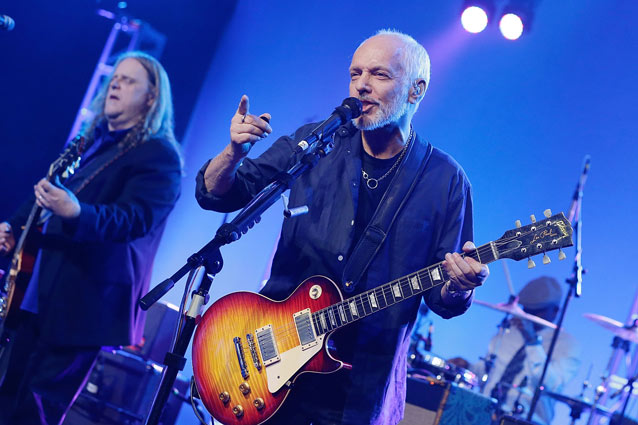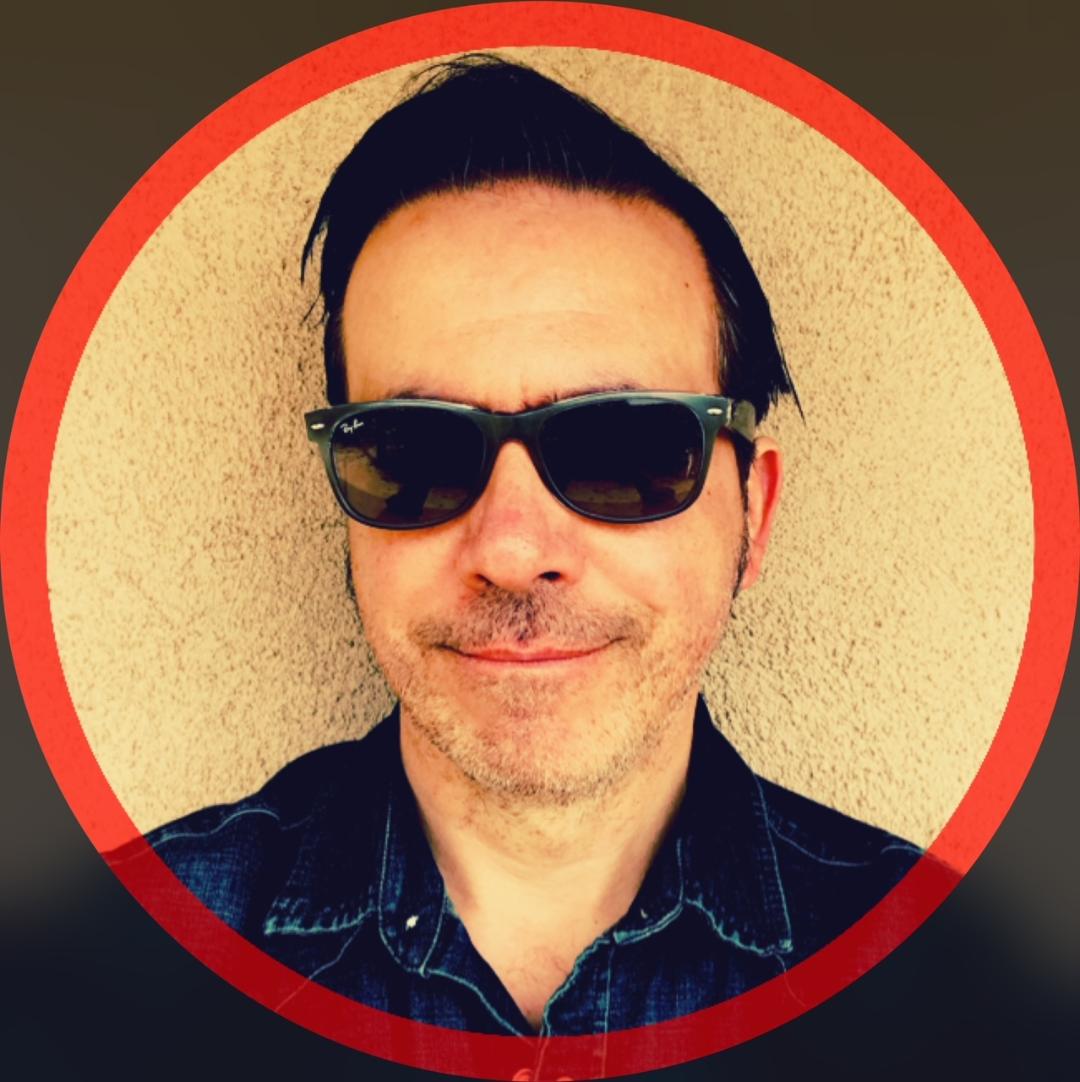Peter Frampton Talks Talk Boxes and Recording 'All Things Must Pass'

In this section of my 2013 interview with Peter Frampton, we discuss his talk-box usage and his involvement in recording sessions featuring two former Beatles—George Harrison and Ringo Starr—during the Seventies. Enjoy!
Where'd you get the idea for the talk box? Did it take a long time to learn how to use it correctly?
When I was living at home with my parents in the Sixties, there was a radio station called Radio Luxembourg. They used this gadget to do their call letters. Also, I think Alvino Rey started using something approaching the sound of a talk box in 1939. But the guy who showed me the talk box was pedal steel guitarist Pete Drake.
So I moved to America and found that Bob Heil was starting to make them because Joe Walsh had asked him to. Pete lent Joe the talk box he used on "Rocky Mountain Way.” I verified this the other day when I spoke with Joe at a Ringo Starr show. Pete's wife, I think, sent it up to Joe to use on that song. It was a very quiet unit that was great for the studio but not for the road.
That's when Bob Heil made one that was more road-worthy. I got one of those around about the same time he'd made the first one for Joe. So Joe and I were playing on the same bill. I’d open for him, and he'd be doing “Rocky Mountain Way,” but I'd go on first and use it on "Do You Feel."
I don't think Joe was thrilled [laughs]. It didn't take too long to get a decent sound out of it, but it took a while to work out how to talk with it. Pete Drake, when I first saw him demonstrate it, made the pedal steel talk and sing. That just floored me. A lot of other people have used the talk box but have used it as a sound, as opposed to actually making the guitar enunciate words.
I'd always thought, “Well, I want to communicate to the audience with this sound, like Pete Drake had to me, and how Alvino Rey had.” There's a video from the 1940s of Alvino Rey doing this thing with “Stringy,” a talking steel guitar puppet. You can find it on YouTube [Check it out below].
And Pete Drake had a song called “Forever,” which was a gold record for him, I think. So it was started a long time ago, and it never ceases to get a wonderful response from audiences, maybe because there's so much Auto-Tune going on, which is much more annoying [laughs]. Hopefully, that'll go away.
Get The Pick Newsletter
All the latest guitar news, interviews, lessons, reviews, deals and more, direct to your inbox!
How would you sum up your contribution to George Harrison’s All Things Must Pass album? The liner notes and credits have always been sketchy at best.
My contribution was acoustic guitar. I was involved in five of the basic tracks with Badfinger, all playing acoustic guitars, including George and myself. So there were about three of them. Well, there were at least five of us. You're talking about Phil Spector, so “More is more” [laughs].
There were at least five of us on acoustic guitars, and then Pete Drake, the steel player, came over half-way through during those five tracks, and we did some of the more country ones, like "If Not for You," which Bob Dylan had written. After I'd done those, which I believe were the last tracks George did on the album, he called me up after a few weeks and said, "Phil wants more acoustic guitars on the tracks." I remember laughing at the time. This time it was just me and George at Abbey Road, the same studio where the Beatles had done Sgt. Pepper.
It's pretty heady stuff, even to this day. I was looking through the glass, and there was Phil Spector. We were literally sitting in front of the glass, the two of us on stools, and I don’t know how many tracks I played on because they just kept adding acoustic guitars to anything with acoustics on it.
The most enjoyable part of that whole thing was in between, when they would change reels, because it was analog, obviously, George and I would start jamming. We were playing whatever; you name it, we were jamming on it. That was the highlight for me, to jam with George and just have fun.
Speaking of former Beatles, you’re credited with playing guitar on a Ringo Starr single from 1976, “A Dose of Rock ’N’ Roll,” from Ringo’s Rotogravure. Did you play the solo?
I can't remember [laughs]. It was the Seventies, and I know I was sober for the session, but I'm not sure about right after. I'd have to listen to it again and see. People keep coming up to me, saying, "Is this you on this?" And I have to go listen to it to find out. I did more sessions than I remember doing. There were a lot of things in the Seventies that I played on that people keep reminding me about.
[I play the song to him.] Yeah, the first part is me. I forgot all about that! That's me. And then, I forget who it is that comes in there, but that sounds like I'm playing my Gibson and then a Telecaster or a Strat comes in.
Well, Jesse Ed Davis is one of the other guitarists who plays on that track. [Guitarist Danny Kortchmar also plays on the song.]
Oh, yeah, Jesse Ed Davis. That's probably who it is.

Damian is Editor-in-Chief of Guitar World magazine. In past lives, he was GW’s managing editor and online managing editor. He's written liner notes for major-label releases, including Stevie Ray Vaughan's 'The Complete Epic Recordings Collection' (Sony Legacy) and has interviewed everyone from Yngwie Malmsteen to Kevin Bacon (with a few memorable Eric Clapton chats thrown into the mix). Damian, a former member of Brooklyn's The Gas House Gorillas, was the sole guitarist in Mister Neutron, a trio that toured the U.S. and released three albums. He now plays in two NYC-area bands.
“There’d been three-minute solos, which were just ridiculous – and knackering to play live!” Stoner-doom merchants Sergeant Thunderhoof may have toned down the self-indulgence, but their 10-minute epics still get medieval on your eardrums
“There’s a slight latency in there. You can’t be super-accurate”: Yngwie Malmsteen names the guitar picks that don’t work for shred
![A black-and-white action shot of Sergeant Thunderhoof perform live: [from left] Mark Sayer, Dan Flitcroft, Jim Camp and Josh Gallop](https://cdn.mos.cms.futurecdn.net/am3UhJbsxAE239XRRZ8zC8.jpg)









